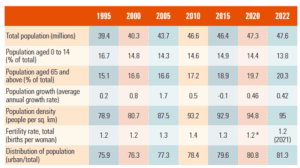An Excruciatingly Detailed Explanation of How a "Money Shift" Destroys Your Engine

If you’ve spent any significant amount of time around car people, particularly those who drive vehicles with manual transmissions, then the odds are good that you’ve heard the term “Money Shift” thrown around, usually followed by a derisive laugh and/or a pained grimace, followed by a head shake. But, like, what exactly is a “money shift,” and why is it so bad?
Enter our favorite salt-and-pepper sweetie from YouTube, Jason Fenske of Engineering Explained. He managed to miss a shift in a Nissan Z at the press launch and, unlike most of us who would take that experience, bury it deep inside and not talk about it even to our therapists, he made a video about what exactly happens when you shift from third gear to second at redline, instead of the third-to-fourth shift you meant to do.
Money Shifting The 2023 Nissan Z – What Happens?!
Ok, so if you don’t have 11 minutes to watch Jason explain money shifting, I’ll give you the TL;DW version. Your engine was designed to operate within a specific rev range, which is why it’s got a red line. The upper limit of that rev range represents the upper tolerance for abuse that your engine components will suffer without damage. When you miss a shift, you frequently over-rev the engine far beyond its tolerance, and things will break.
Things breaking in the valvetrain — rockers, timing components like belts or chains, etc. — will generally cause catastrophic damage, which is expensive to repair, hence money shift. Of course, as Jason experienced, not every missed shift results in damage, and through a combination of a quick clutch foot, tires breaking traction and a heaping helping of good luck, he was able to avoid being the most embarrassed man at that press launch.
Things don’t always turn out that way, though, as freelance auto journalist and racing car driver Mark Hales learned back in 2013 when he bungled a shift in David Piper’s Porsche 917, resulting in a lawsuit seeking $174,000 in damages to cover repairs to the ultra-rare, ultra-valuable air-cooled flat-12 engine.
What’s the takeaway from all this for you, the spirited driver? Slow your shifting down. You’re not John Heinricy ripping gears in a ZR-1, and that’s OK.




